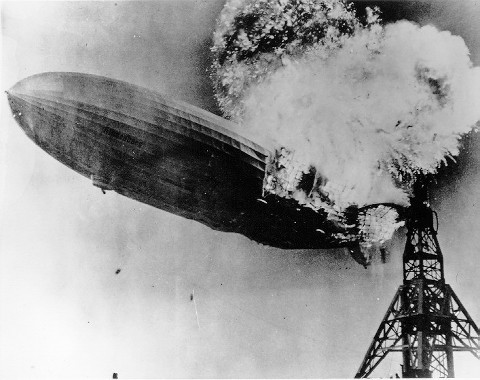It's a little-known fact that Australia had a phantom airship scare of its very own. That's mostly due to phantom airships themselves being little-known, on the whole. But the Australian sightings of August-September 1909 were also less numerous and less spectacular than the other waves that preceded it that year, in Britain in May and in New Zealand in July and August. They are still, however, interesting, and the Australian reaction to these visitations differed from that of their imperial cousins.
The Australian press did report on the phantom airships seen flying over Britain and New Zealand, though not in great detail. On 19 May the Sydney Morning Herald said that 'For several weeks a mysterious airship has occasionally been seen over the eastern counties of England, chiefly at night' -- and not much more than that. A few days later, on 22 May, the West Australian told of 'reports of a mysterious balloon having been seen at night time over the east coast' of England, which had been 'confirm[ed]' by policemen and sailors. The subsequent 'solutions' to the mystery were reported more fully, such as the advertising airship found at Dunstable (see, e.g., Adelaide Advertiser, 28 May) and the so-called admission by a Dr M. Boyd that he was the inventor and pilot of the mystery airship (a claim which itself was later -- or earlier, going by the Australian publication date -- debunked). The possible German origin of the mystery airship(s) was stressed in most of these accounts: for example, the West Australian noted that 'The vessel is supposed to be a reconnoitering balloon belonging to the German fleet now manoeuvring in the North Sea'.
The sightings across the Tasman were given a bit more attention, though less context -- it seems nothing was said about where New Zealanders thought the airships might have come from. Several newspapers printed the following story (here taken from the Brisbane Courier for 31 July):
Remarkable stories are coming from the South Island regarding a mysterious light seen at night. The suggestion is that the light is shown by an airship. In some cases it is circumstantially declared that the light appears in the centre of a black body. One observer declares that the airship is shaped like a boat, with a hat top, and was speeding at about 30 miles an hour. An airship has also been seen by about 30 people in the Oamaru district. The most circumstantial report comes from Gore, stating that it was reported that an airship had been seen there for the last four nights, and that last night it was distinguished at 9 o'clock, passing at a great height, and travelling south, with a headlight attached.
About a week later, another, now more dismissive report again circulated in a number of the major dailies:
Circumstantial accounts have been received from different parts of the Dominion of an airship having been seen both day and night.
One informant declares that the occupant of the airship sang out to him in a foreign language.
Generally speaking, the reports, though circumstantial, are not taken too seriously.
In the Sydney Morning Herald of 7 August the above was revealingly entitled 'AERIAL HYSTERIA. NEW ZEALANDER'S [sic] SCARE'. After such a smug headline it is entirely satisfying to note the first reports of true-blue fair-dinkum you-beaut Aussie scareships surfaced just a few days later, which I'll discuss in a following post.


